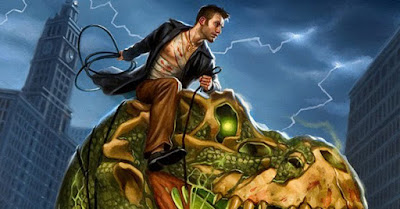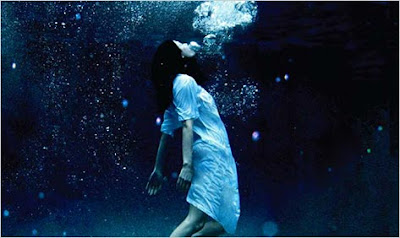Illusion or Real?
Let's talk about the works first. "Pan's Labyrinth" is the story that follows Ofilia's beautiful fantasy and cruel reality in Spain. In reality, she gets a lot of stress from her Captain Vidal, a general and Ofilia's new father who is brutal, new environment, and her pregnant mother's poor condition. On the other hands, in fantasy part, she becomes the most important character, and complete the missions that are given by Pan, the fantasy creature. After Ofilia's death, Ofilia goes to the fantasy world and becomes princess Moanna.
In "The Ocean at the End of the Lane," it follows the memories of the man who has experienced with a fantasy world. The man also has similar stories with Ofilia that the man has a lot of bad experiences in the real world; he was the lonely boy who does not have single friends at his seventh birthday party, miner's suicide, and has a financial problem. In the fantasy part (it is not beautiful as Ofilia's fantasy,) the boy is choked by the coin and sees creatures throws coins to people.
Many people might have the same question. Is their fantasy real? It is hard to determine that "Pan's Labyrinth" fantasy is real or illusion since there are a few parts that make the fantasy real or not. The evidence that shows the fantasy is not real can be found in the last scene when Ofilia talks with Pan. When Captain Vidal comes to the Ofilia through the forest labyrinth, he saw that she talks with nothing. Also, Ofilia gets a lot of stress from Vidal, it can cause Ofilia's fantasy. However, other evidence that shows the fantasy is real can be found in the chalk that makes the secret door to the baby, mandragora that cures Ofilia's mother for a while, and the forest labyrinth that blocks Vidal. Because of these pieces of evidence, it is not clear that Ofilia's fantasy is true or not.
What about another story? "The Ocean at the End of the Lane" fantasy is an illusion even though he has a lot of stories with Lettie in the fantasy world. The boy (or the man) believes what he sees in the fantasy world and gets amazing experiences, but the boy forgets everything when he comes back to the reality. This phenomenon is similar to the dream that all people have because the memories from the dream disappear when people wake up from sleep. It reminds me the novel 'Life of Pi,' by Yann Martel, since Patel, the main character, tries to ignore the reality and believes his fantasy that happens on the boat.
As you can see, these works show the fantasy that is not real; Ofilia's anxiety makes herself as a princess and the boy's situation causes building the fantasy world. Is it important to know that the fantasy is an illusion or not? I think it is really important because the illusion shows the main character's mental state and it makes people focus on the main character. If the fantasy is real, it would not focus on the main character, but the fantasy world like Ofilia, Patel, and the boy. What do you think about this?





